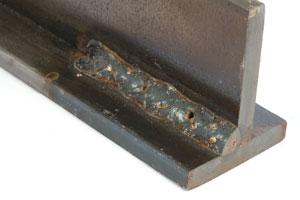Professional Recommendations on What is Porosity in Welding and Exactly How to Address It
Professional Recommendations on What is Porosity in Welding and Exactly How to Address It
Blog Article
Recognizing Porosity in Welding: Discovering Causes, Impacts, and Prevention Methods
Porosity in welding is a persistent obstacle that can substantially impact the top quality and stability of welds. As professionals in the welding sector are cognizant, recognizing the reasons, results, and prevention strategies associated with porosity is vital for attaining robust and trustworthy welds. By delving right into the origin of porosity, examining its destructive impacts on weld quality, and exploring effective prevention methods, welders can boost their expertise and abilities to create high-quality welds regularly. The detailed interaction of variables adding to porosity calls for a comprehensive understanding and a positive method to guarantee effective welding end results.
Typical Sources Of Porosity
Contamination, in the kind of dust, grease, or rust on the welding surface, develops gas pockets when heated up, leading to porosity in the weld. Inappropriate shielding occurs when the protecting gas, frequently made use of in processes like MIG and TIG welding, is unable to completely secure the liquified weld swimming pool from reacting with the bordering air, resulting in gas entrapment and subsequent porosity. Furthermore, insufficient gas protection, typically due to incorrect flow prices or nozzle positioning, can leave parts of the weld unprotected, allowing porosity to create.
Effects on Weld High Quality
The presence of porosity in a weld can significantly compromise the overall high quality and stability of the welded joint. Porosity within a weld develops gaps or tooth cavities that deteriorate the framework, making it more susceptible to cracking, corrosion, and mechanical failure.
Furthermore, porosity can hinder the effectiveness of non-destructive screening (NDT) methods, making it challenging to find other defects or gaps within the weld. This can bring about significant security concerns, particularly in critical applications where the architectural integrity of the welded parts is paramount.

Prevention Techniques Review
Given the harmful impact of porosity on weld high quality, effective avoidance strategies are important to keeping the architectural integrity of bonded joints. In addition, picking the proper welding criteria, such as voltage, current, and travel rate, can aid lessen the threat of porosity development. By integrating these prevention techniques right into welding practices, the incident of porosity can be dramatically reduced, leading to stronger and extra reliable bonded joints.
Importance of Proper Protecting
Proper shielding in welding plays an essential duty in stopping atmospheric contamination and making certain the stability of welded joints. Securing gases, such as argon, helium, or a combination of both, are frequently utilized to protect the weld swimming pool from reacting with components in the air like oxygen and nitrogen. When these responsive components come into call with the warm weld swimming pool, they can create porosity, resulting in weak welds with lowered mechanical properties.

Poor protecting can cause different issues like porosity, spatter, and oxidation, jeopardizing the architectural integrity of the welded joint. Adhering to correct protecting methods is necessary to produce top notch welds with minimal problems and ensure the long life and reliability of the bonded components.
Surveillance and Control Methods
Exactly how can welders successfully keep track of and manage the welding process to make sure optimum outcomes and stop problems like porosity? By continually keeping an eye on these variables, welders can determine variances from the excellent problems and make instant modifications to avoid porosity formation.

Additionally, executing correct training programs for welders is vital for keeping track of and controlling the welding procedure effectively. What is Porosity. Enlightening welders on the importance of keeping regular parameters, such as correct gas shielding and take a trip speed, can assist stop porosity issues. Normal assessments and qualifications can additionally ensure that welders excel in surveillance and managing welding procedures
Moreover, making use of automated welding systems can improve monitoring and control capacities. These systems can exactly regulate welding our website criteria, decreasing the chance of human error and making certain constant weld quality. By combining innovative their website monitoring modern technologies, training programs, and automated systems, welders can efficiently check and control the welding procedure to reduce porosity issues and achieve top notch welds.
Conclusion

Report this page